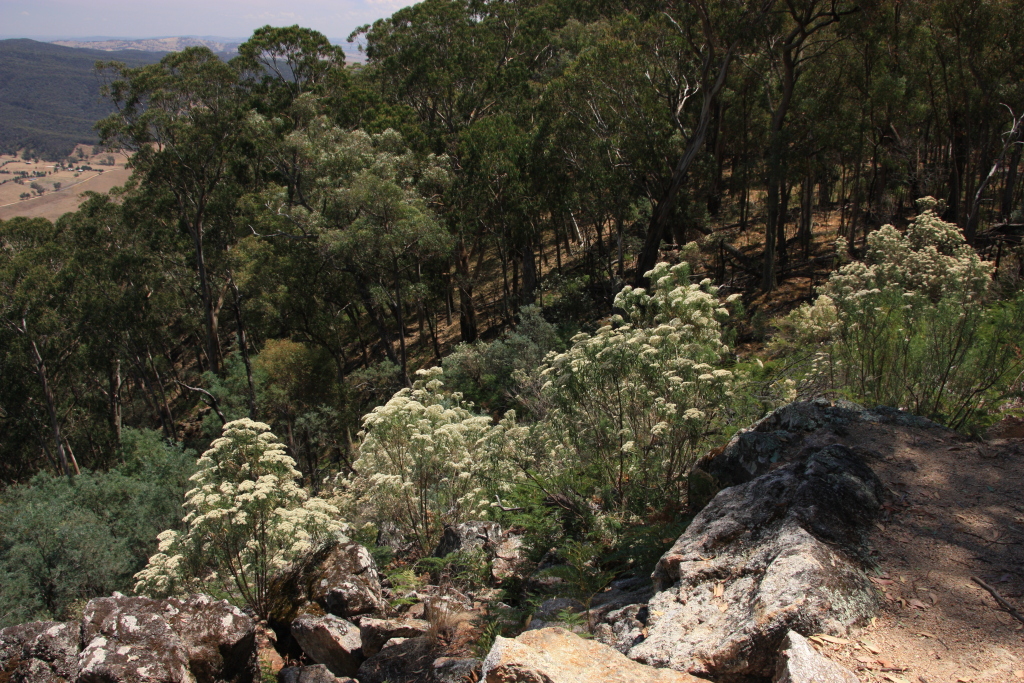Cassinia longifolia
R.Br. Shiny CassiniaErect aromatic shrub to c. 3 m high; branchlets with c. appressed cottony hairs, erect, gland-tipped hairs and sessile glands, viscid. Leaves spreading (young ones often gummed together), linear to narrow-lanceolate, 15–95 mm long, (1–)2–5(–9) mm wide, glabrous and viscid above, white- or grey-cottony and glandular beneath (midrib usually glabrescent), apex acute, margins flat to recurved; petiole 0.5–1 mm long. Inflorescences corymbose, 5–20 cm diam. Capitula 50–400, white, turbinate, 3.5–4.5 mm long, 1.5–2.5 mm wide; involucral bracts 12–18, innermost with lamina deltoid, 1.5–2 mm long, erect, white, margin entire, incurved; receptacle bracts 3–4; florets 5–6. Cypsela cylindric, c. 1 mm long, sparsely papillose; pappus bristles 1.5–2.5 mm long, apex tapering Flowers Nov.–Feb.
GleP, VVP, VRiv, GipP, OtP, WaP, Gold, CVU, DunT, NIS, EGL, EGU, WPro, HSF, HNF, OtR, Strz, MonT, HFE, VAlp. Also Qld, NSW, ACT, Tas. Locally common in drier open-forests, often on rocky ground, and often forming near-pure stands following fire or other disturbance. .
Puttock, C.F. (1999). Cassinia. In: Walsh, N.G.; Entwisle, T.J., Flora of Victoria Vol. 4, Cornaceae to Asteraceae, pp. 742–745. Inkata Press, Melbourne.
 Spinning
Spinning

